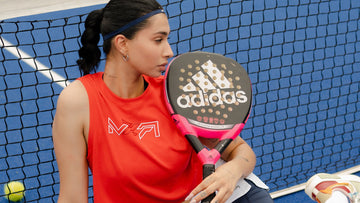Padel tennis is one of the fastest-growing racket sports in the world, attracting players of all skill levels. It combines elements of tennis and squash, making it a fast-paced and strategic game. However, to play Padel correctly, it is important to understand the official rules.
Whether you are a beginner learning the basics or an experienced player looking to refine your knowledge, this guide will cover the top 10 Padel tennis rules every player should know.
-
The Ball Must Bounce Before Hitting the Walls
Padel courts are enclosed by glass and mesh walls, which makes the game unique compared to traditional tennis. However, the ball cannot be hit directly onto the walls.
When striking the ball, it must first bounce on the ground before making contact with the walls on the opponent’s side. If a player hits the ball directly onto the walls without it bouncing, the shot is considered out.
The ability to use walls strategically allows players to create angles and unpredictable shots, making Padel a highly tactical sport. To master it, you will also have to understand the Padel court dimensions.
-
The Serve Must Be Underhand and Bounced First
Unlike tennis, where serves are often fast and powerful, Padel has a more controlled and strategic serving method.
The server must follow these rules when serving:
-
The ball must be hit underhand and below waist height.
-
The server must bounce the ball once on the ground before striking it.
-
The serve must land diagonally in the opponent’s service box.
-
The server must stand behind the service line and keep at least one foot on the ground.
If the ball touches the net but still lands correctly in the service box, it is considered a let, and the server gets to try again. If the ball lands outside the service box or hits the net and falls on the wrong side, it is a fault. Players have two attempts to serve correctly.
-
Scoring Follows the Traditional Tennis System
Padel uses the same scoring system as tennis, which consists of the following points:
-
0 (Love)
-
15
-
30
-
40
-
Game (a player must win by two points)
If both players or teams reach 40-40, this is called deuce. To win from deuce, a player must score two consecutive points—one to gain the advantage and one to secure the game.
A standard Padel match is played in a best-of-three or best-of-five sets format. A player or team must win six games in a set, with a two-game lead required to secure the set.
-
The Ball Can Only Bounce Once on Each Side
Once a rally begins, the ball is allowed to bounce only once on a player’s side before it must be returned. If the ball bounces twice before being hit, the point is awarded to the opposing team.
This rule forces players to react quickly and be in the right position to return the ball effectively. Since Padel courts are smaller than tennis courts, fast movement and good positioning are essential to keeping the ball in play.
-
Players Can Use the Walls to Keep the Ball in Play
One of the most exciting aspects of Padel is the ability to use the walls during play. After the ball bounces on a player’s side, it is legal for it to hit the surrounding walls before being returned.
A player can also intentionally hit the ball against their own glass walls to send it back over the net. This allows for creative shot-making and different tactical strategies, making Padel unique compared to other racket sports.
However, if a player hits the ball directly against the opponent’s walls without it first bouncing on the ground, the shot is considered out.
-
The Ball Cannot Touch the Metal Fence Before Bouncing on the Opponent’s Side
While the glass walls are part of the game, the metal fence is not. If a player hits the ball and it touches the fence before bouncing in the opponent’s court, the point is lost.
The fence is only in play after the ball has bounced. If the ball bounces inside the court and then hits the fence, the rally continues.
This rule encourages players to focus on precision and control rather than power.
-
Double Bounces Are Allowed on the Opponent’s Side in Special Cases
There is one special situation where the ball is allowed to bounce twice, but it benefits the attacking player. If a player hits the ball and it bounces in the opponent’s court, then bounces out of the court over the walls, the player who hit the ball wins the point immediately.
This is known as a "smash out" and is one of the most spectacular plays in Padel. Skilled players use this technique to finish points with aggressive overhead shots.
-
Players Can Exit the Court to Return a Shot (on Some Courts)
Some Padel courts are designed with open side exits. In these cases, if an opponent hits a shot that bounces and exits through the side door, a player can run outside the court and attempt to return the ball.
This is an advanced move that requires excellent positioning and reflexes. Although it is rare, it adds excitement to professional Padel matches.
Not all courts allow for this rule, so it is always good to check the playing conditions before the match.
-
Volleys Are Not Allowed When Returning a Serve
A volley is when a player strikes the ball before it bounces. In most parts of the game, volleys are allowed, but there is one key exception—when returning a serve.
The receiving player must let the ball bounce before returning the serve. If they volley the ball directly after the opponent’s serve, it is a fault, and the server wins the point.
This rule ensures that the server has a fair chance to start the rally without immediate pressure.
-
Padel is Primarily Played in Doubles Format
Padel is typically played in doubles, meaning there are four players on the court (two per team). The court dimensions are specifically designed for doubles play, and most competitive matches follow this format.
Although single-player Padel courts exist, they are much less common. The smaller court size and reliance on wall rebounds make doubles play more strategic and enjoyable.
Playing in doubles also makes the game more social, which is one of the reasons Padel has become so popular worldwide.
Now that you understand the top 10 Padel tennis rules, you are ready to step onto the court with confidence. By mastering these key rules, you will be able to enjoy longer rallies, play fair matches, and develop a better understanding of the game.





